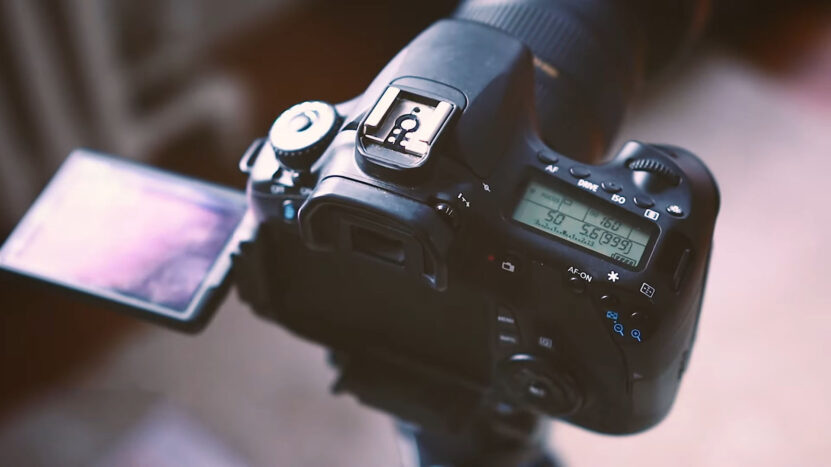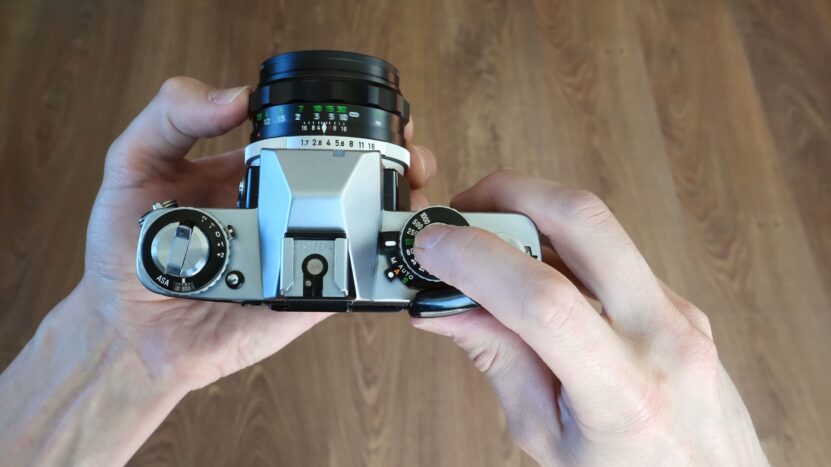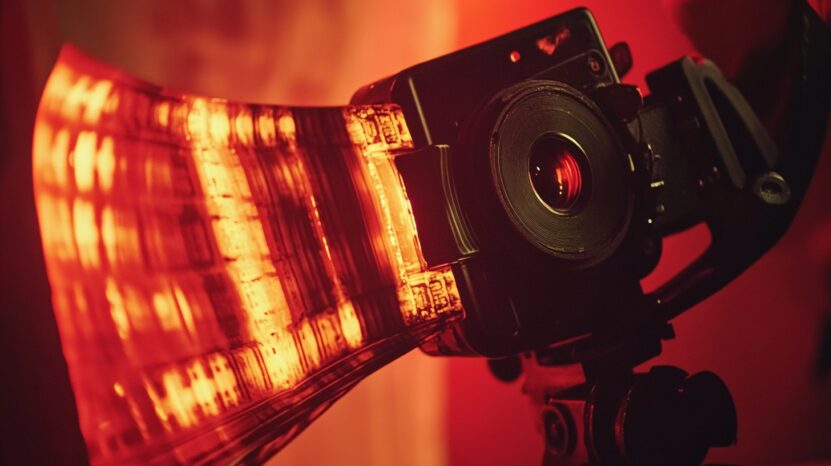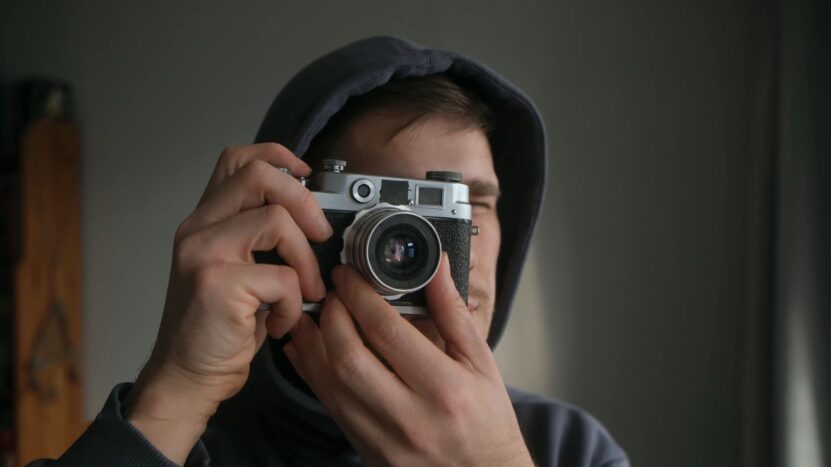Film photography has gained remarkable popularity among beginners eager to experience its hands-on approach and creative possibilities. Choosing proper film cameras is the first step in mastering this craft, as it shapes how you interact with the medium and develop your skills.
With so many options available, finding a film camera that balances ease of use, functionality, and reliability can feel overwhelming.
Because of this, we decided to provide you with some tips on how can you find the best film cameras for beginners.
Top Film Cameras for Beginners
Several models cater perfectly to those just starting with film photography, each offering features that make the learning process approachable and enjoyable. Here are some excellent options:
| Camera Model | Key Features | Best For |
|---|---|---|
| Canon EOS Series | Automatic/manual modes, lens compatibility, versatile design | Transitioning from digital |
| Pentax K1000 | Fully manual controls, durable, straightforward operation | Learning manual settings |
| Kodak Ektar H35 | Compact, lightweight, affordable half-frame camera | Casual, portable photography |
| Olympus OM-1 | Reliable, quiet shutter, precise manual controls | High-quality, compact design |
| Nikon FM10 | Fully manual, Nikon lens compatibility, simple layout | Students mastering basics |
| Minolta X-700 | Automatic exposure, manual flexibility, user-friendly | Mixing control with convenience |
| Canon AE-1 Program | Program mode, manual options, beginner-friendly | Balancing automation with learning |
| Yashica T4 | Point-and-shoot simplicity, excellent lens, portable | Easy start with professional results |
Each model serves different needs. The Canon EOS and Nikon FM10 are fantastic for their adaptability and lens options, the Pentax K1000 and Olympus OM-1 provide full manual control for a hands-on experience, and cameras like the Kodak Ektar H35 and Yashica T4 shine in portability and simplicity.
Where to Purchase Film Cameras

Film cameras are available in both new and pre-owned conditions, offering options for every budget and level of expertise. For beginners, purchasing the right camera involves considering availability, quality, and reliability.
Fortunately, a variety of platforms and retailers cater to this growing market.
Online Platforms
Websites like eBay, Etsy, and KEH Camera are excellent starting points for finding vintage film cameras. eBay provides a wide range of options, but it’s crucial to carefully read descriptions and check seller ratings.
KEH Camera specializes in professionally graded used gear, ensuring a trustworthy purchase. Etsy is also popular for vintage models, often including cameras that are fully functional or refurbished.
Specialty Camera Stores
Retailers such as Adorama, B&H Photo, and MPB cater to film enthusiasts, offering both new and pre-owned film cameras.
These stores often provide warranties and detailed condition descriptions, making them a safer choice for beginners who want peace of mind.
Local Options
Exploring thrift stores, flea markets, and camera fairs can uncover hidden gems.
While these options may require more effort to inspect cameras thoroughly, they often come with the benefit of negotiating prices.

Brands Offering New Film Cameras
For those who prefer new over used, Lomography and Kodak are top choices. Lomography offers a range of fun, creative models like the Lomography Simple Use and La Sardina, while Kodak caters to beginners with models such as the Kodak Ektar H35.
Another excellent option is the Nikon FM10, a fully manual SLR that combines modern build quality with the charm of traditional film photography.
Other Recommended Cameras
Additional beginner-friendly options include the Olympus OM-10, known for its affordability and simplicity, and the Minolta X-700, which offers automatic modes for ease of use.
The Yashica T4, a premium point-and-shoot, is highly sought after for its sharp lens and compact size, making it great for casual photography.
Selecting the Right Film

Choosing the right film plays a crucial role in shaping the outcome of your photography. Each type of film offers characteristics that influence color, contrast, and grain, allowing photographers to craft their desired aesthetic.
Color Negative Film
This type of film is ideal for beginners due to its flexibility and ease of use. It is forgiving in exposure, meaning slight mistakes in settings are less likely to ruin your photos.
The color-negative film works well for everyday scenes, portraits, and landscapes.
Popular options include Kodak Gold 200, which produces warm tones and fine grain, and Fujifilm Superia X-TRA 400, known for vibrant colors and excellent performance in various lighting conditions.
Black-and-White Film
For those drawn to timeless, dramatic images, black-and-white film is an excellent choice.
It emphasizes texture, light, and contrast, stripping away distractions and focusing on the composition. Ilford HP5 Plus is a beginner-friendly option with an ISO of 400, offering versatility and consistent results.
Another great choice is Kodak Tri-X 400, which provides a classic, gritty aesthetic often associated with street photography.
Slide Film (Reversal Film)
Although less forgiving and more challenging to use, slide films like Fujifilm Velvia 50 or Kodak Ektachrome produce stunningly rich colors and high contrast.
It’s recommended for more experienced photographers but can be an exciting option for those looking to experiment.
ISO Ratings
ISO determines a film’s sensitivity to light. Beginners should start with ISO 200 for bright outdoor settings or ISO 400 for a balance of indoor and outdoor use.
Higher ISOs like 800 or 1600 are suitable for low-light situations but tend to introduce more noticeable grain, which can add a stylistic effect.
Film Stock Recommendations
- Kodak Portra 400: Renowned for its soft tones and natural skin colors, making it a favorite for portrait photography.
- Fujicolor Pro 400H: Excellent for subtle, pastel-like colors, often preferred in wedding photography.
- CineStill 800T: A tungsten-balanced film that excels in nighttime and artificial light photography, adding a cinematic feel to your shots.
Tips for Beginners
Getting started in film photography is an exciting adventure, but success requires more than just snapping photos. Building skills, maintaining your gear, and embracing the process is key to growing as a film photographer.
Mastering Manual Settings
Understanding how aperture, shutter speed, and ISO work together is fundamental. These settings control exposure, depth of field, and motion blur, allowing you to achieve your creative vision. Start with small adjustments and note the results.
For example, experiment with a wide aperture (f/2.8) for blurred backgrounds or a fast shutter speed (1/1000) to freeze action.
Using a notebook or app to track your settings and results can accelerate your learning.
Caring for Equipment
Proper maintenance ensures your camera performs reliably. Keep your camera in a dry, dust-free environment to prevent mold or mechanical issues.
Invest in a soft lens cloth to clean fingerprints and smudges, and avoid storing your camera in damp areas.
Film loading requires care, make sure the film is properly aligned to avoid tearing or misloading, which can result in wasted rolls.
Practicing and Experimenting
Film photography thrives on experimentation. Try shooting in various lighting conditions, such as a golden hour or overcast skies, to see how light affects your images.
Explore creative techniques like double exposures or shooting expired films for unpredictable effects.
Mistakes are inevitable, but they provide valuable lessons that help you improve.

Learning Composition
Study basic composition principles such as the rule of thirds, leading lines, and framing.
These techniques can transform an ordinary scene into an engaging photograph. Pay attention to how you frame your subject and the interplay of light and shadows within your shot.
Building Patience and Discipline
Film photography is slower than digital, requiring you to think deliberately about each frame. This slower pace encourages intentionality, helping you refine your skills and appreciate the artistic process.
Waiting for your film to be developed also fosters excitement and a deeper connection to your work.
The Bottom Line
Film photography offers an enriching creative journey for anyone ready to embrace its challenges.
Through tactile processes, a thoughtful approach to shooting, and the rewards of analog mastery, beginners can unlock an entirely new way to view the art of photography.